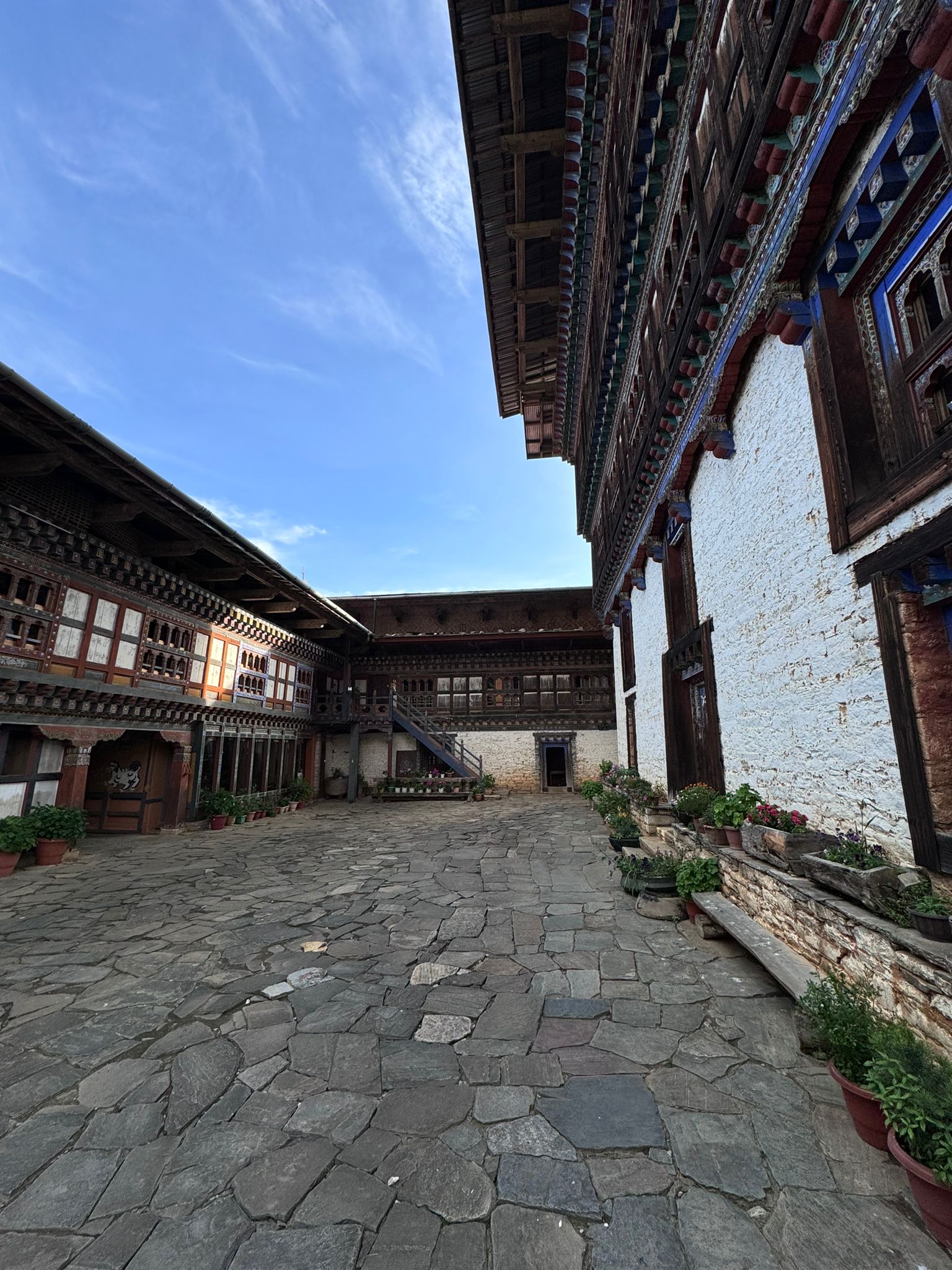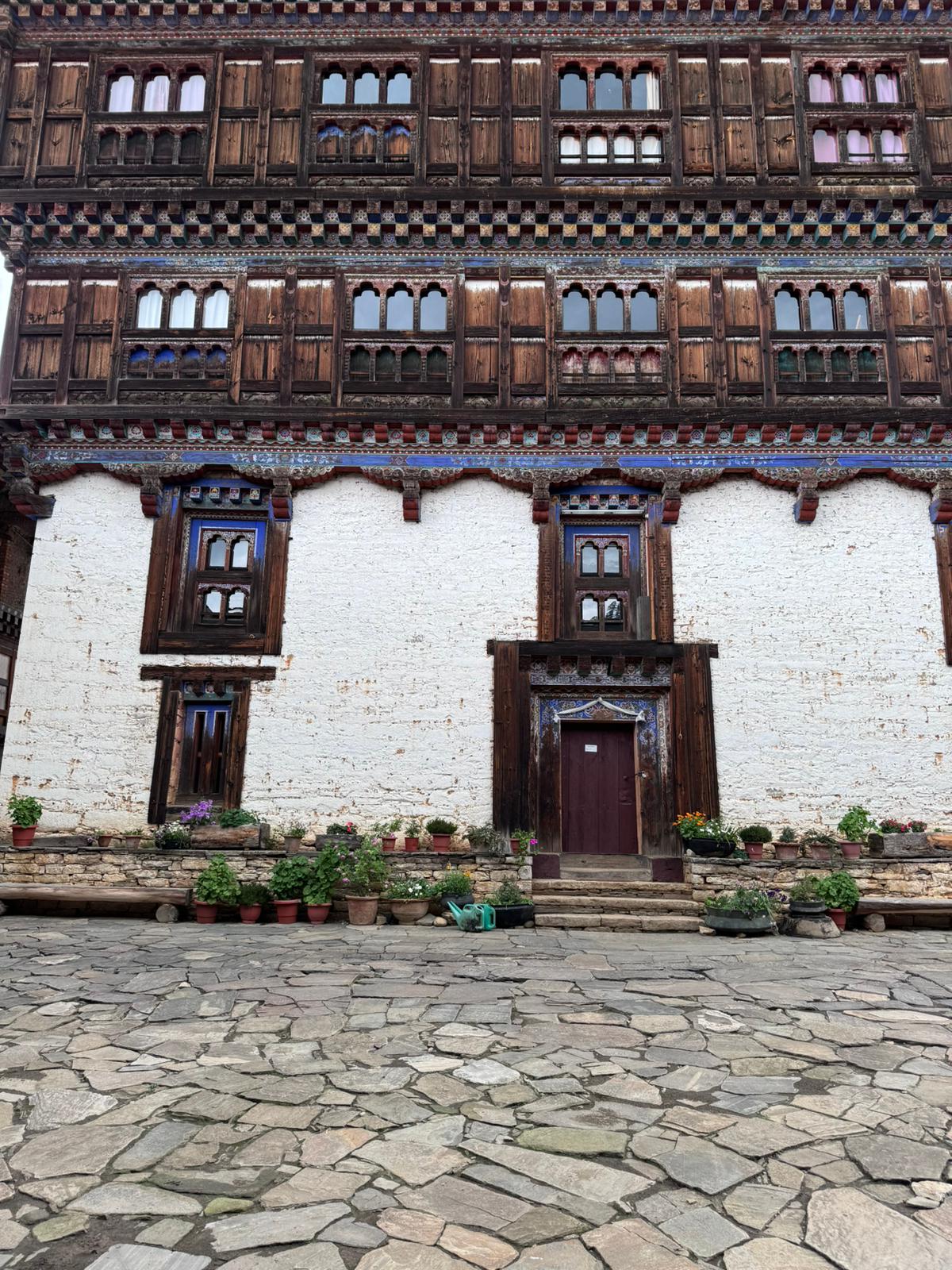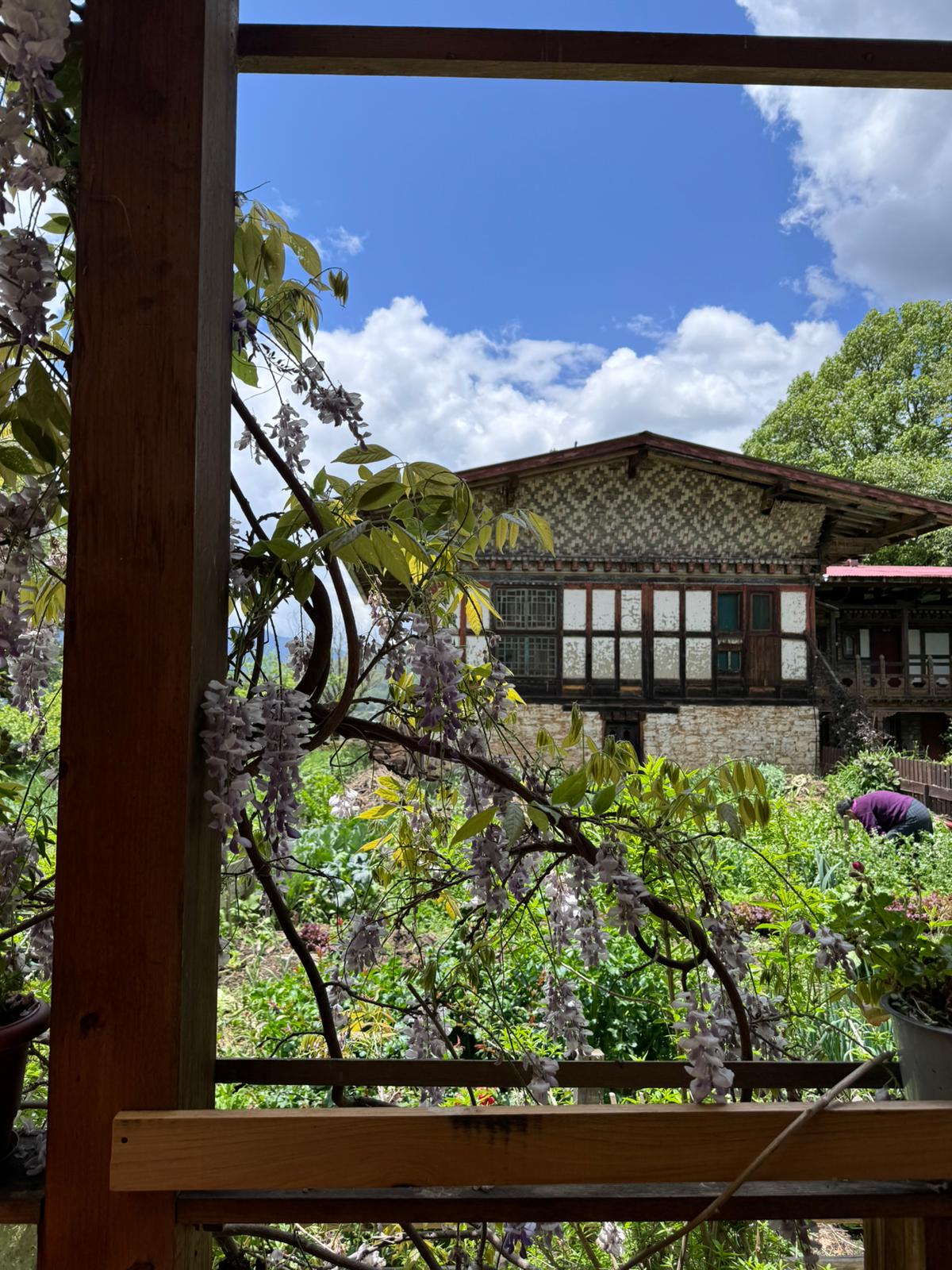
The inner courtyard of the main complex
History
Ogyen Choling was never so much a seat of political power as a center for religion. Throughout its history it was referred to by terms which alluded to its religious nature as being a monastery or hermitage, gompa.
In fact the history of Ogyen Choling begins with the visit of the great Tibetan master of Buddhism, Longchen Rabjam (1308-63). He is the most celebrated writer and philosopher of the Nyingmapa School (Ancients) of Tibetan Buddhism and is regarded as the synthesizer of the doctrine and methods of Dzogchen, 'School of Great Perfection'. Oral tradition explains why the great master chose the location for his centre. Looking up from the valley towards Ogyen Choling with the Kanyai mountain to the east, the panoramic view is that of the shape of an elephant's head. The elephant in Buddhist iconography is auspicious and it has many meanings; it is the vehicle of some Vajarayana Buddhist deities and because an elephant can live up to a hundred years it also symbolizes posterity. A few hundred meters above the village, climbing towards the crown of the elephant's head is a cave which is to this day revered as the meditation cave of Longchen Rabjam.
This place with its special physical features and blessed by the presence of Longchen Rabjam, later became a center of the Tibetan saint Dorji Lingpa (1346-1405). Dorji Lingpa is one of the great tertons (Religious treasure discoverer) of the Nyingmapa school and also a master of the Dzogchen teaching in the Bon tradition. Ogyen Choling is regarded as Dorji Lingpa's center and the descendants of the saint have not only borne the responsibility of upholding the religious tradition, choeju, but also the genealogical lineage, dungju, of Dorji Lingpa. The families of Ogyen Choling had the status of Lama choeju or "religious nobility". The best known historical personality of this lineage is undoubtedly Tsokye Dorji who was the fifteenth generation descendant of Dorji Lingpa. He was the Trongsa Penlop or "governor of Trongsa". In 1853 he handed over the post of governorship to Jigme Namgyal (1825-1881) the father of Ugyen Wangchuck (1862-1926), who in 1907 became the first hereditary monarch of Bhutan.
Source: Ogyen Choling Foundation

